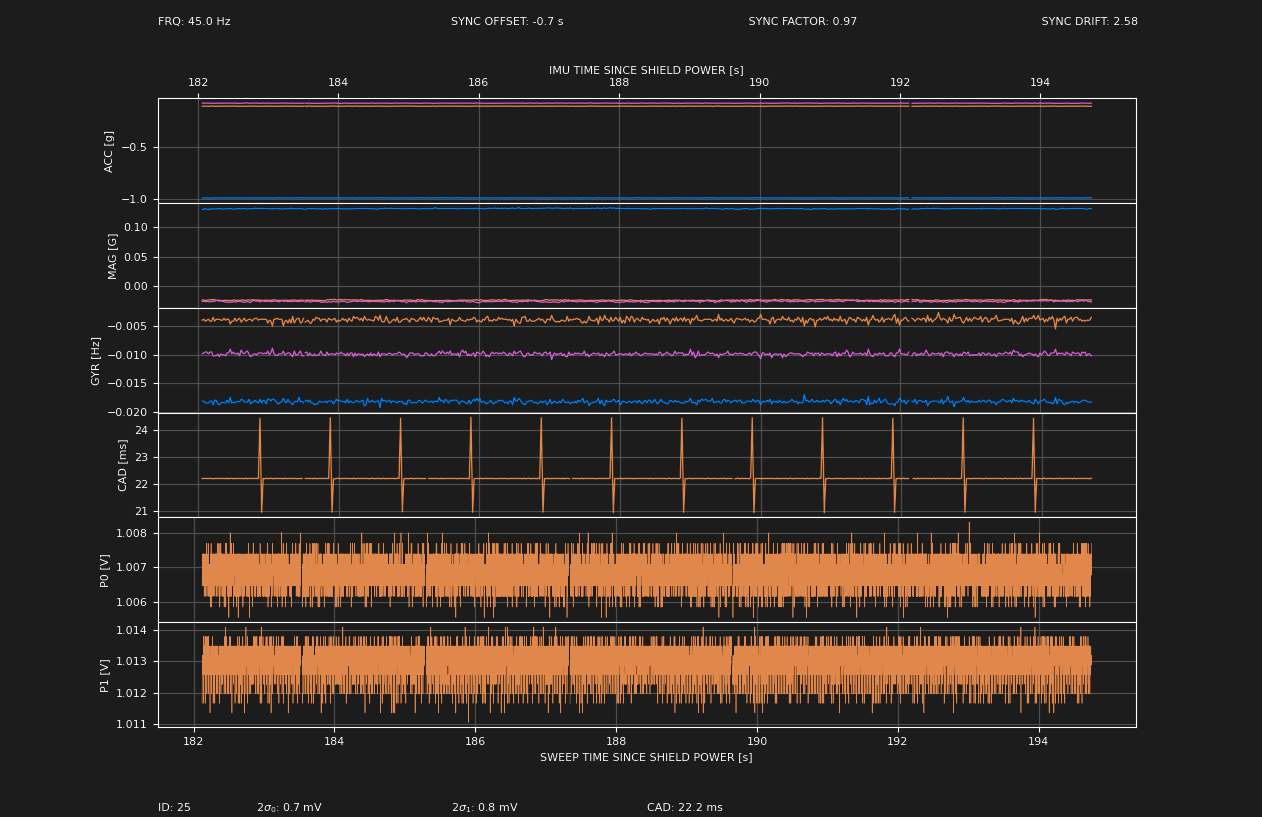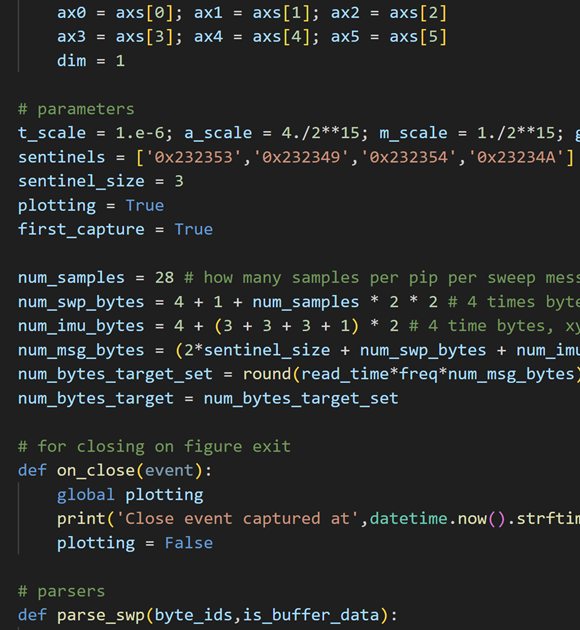
Realtime Data Parsing
Rocket instruments demand constant, real-time monitoring to assess hardware health and nominal behavior. This is
especially important when the rocket is on the rail, 60 seconds from launch, awaiting a go/no-go status check.
For this reason, the code or software that parses instrument data streams is a crucial component of rocket
instrument design.
I contributed to the development of such monitoring software for the rocket Mini Plasma Imager
(rMPI)
and overhauled the parsing code for the Petite Ion Probes
(PIP),
transitioning it to Python 3 to take advantage of its significantly improved binary data handling. A time
step of the real-time plotting is shown here.
The PIPs communicate using the RS-422 protocol with asynchronous data streams. This necessitates the use of
sentinel values to indicate the start of a specific message. The PIP data can include up to four messages per
data point.
